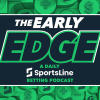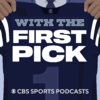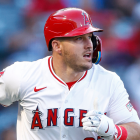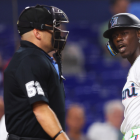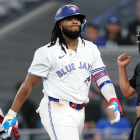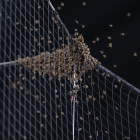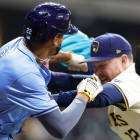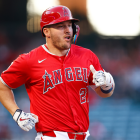Baseball's regular season is now two weeks old, yet erstwhile former Boston Red Sox closer Craig Kimbrel remains a free agent. As of late, there have been more reports about which teams aren't interested in his services than which are. That's a bad sign, and it's a curious one, too. Kimbrel is, after all, the career saves leader through an age-30 season. Saves are a statistic of circumstance more so than performance, but his success transcends any role: over the last three years, he's posted a 184 ERA+ and four times as many strikeouts as walks. He's good.
Whenever a player or a topic sits under the lamp for too long, it's inevitable that nits will be picked and brickbats will be lobbed. Kimbrel has proven to be no exception. Let us, then, take a few minutes to examine five potential concerns teams have with signing Kimbrel -- and judge whether or not their reservations are merited, or if they should get a deal done anyway.

Concern No. 1: Kimbrel is too old
Let's start with Kimbrel's age. He's 30 and will turn 31 on May 28. When he blows out those candles, he'll join Aroldis Chapman and Kenley Jansen as 31-year-old closers. He'll still be years -- indeed, plural -- younger than Adam Ottavino, considered by some last offseason to be the better reliever. Kimbrel is about 12 days older than Joe Kelly, who, on the never-ending quest to find his True Role has been gifted the perception of eternal youth, and about a month older than Blake Treinen, everyone's favorite breakout closer from last season.
When someone says they're concerned with Kimbrel's age, they could be talking about something else -- his workload, his projections heading forward. Let's touch on those aspects.
It's true that Kimbrel has been used at least 50 innings every year since 2011, resulting in 532 innings for his career -- most of them of the high-leverage variety. Why use his consistent reliability and availability against him though? Ottavino and Kelly were also free agents this winter, let's use them as reference points. Ottavino has thrown 420 innings since debuting in 2010 (same as Kimbrel) -- he'd have more frames, except he missed time due to elbow surgery. Kelly has thrown more than either (631) since his 2012 debut due to his starting days. No one seemed to take issue with his workload -- and he's actually missed time on the injured list due to arm woes, unlike Kimbrel, whose one trip to the IL was due to a knee issue back in 2016.
The best predictor for an arm injury is a past arm injury. It's possible that Kimbrel tears his UCL on his next pitch. It's also possible he doesn't. No one can say for sure. The same uncertainty surrounds Kimbrel's future. Teams are said to be interested in paying for what players will do, not what they have done (unless they're making less than their market value, then it's all good). For some reason, Kimbrel is viewed as a mercurial quantity. It doesn't add up -- not when his track record is compared to those of Ottavino and Kelly.
Consider that Kimbrel has never had a season with an ERA+ worse than 130. Ottavino, for comparison, had a shaky 2017 during which he managed a 100 ERA+ because he walked nearly seven per nine while permitting almost a homer and a half per nine innings. As for Kelly, let's put it this way: he's had one season in his career where he's had an ERA+ over 100 and a strikeout-to-walk ratio above 2.00. For those who prefer advanced measures, Kimbrel has never had a DRA higher than 2.88; neither Ottavino nor Kelly have ever been underneath 3.00.
Teams were OK signing those two -- with shakier reliability and track records -- to three-year deals worth more than $25 million apiece. It stands to reason Kimbrel merits more.
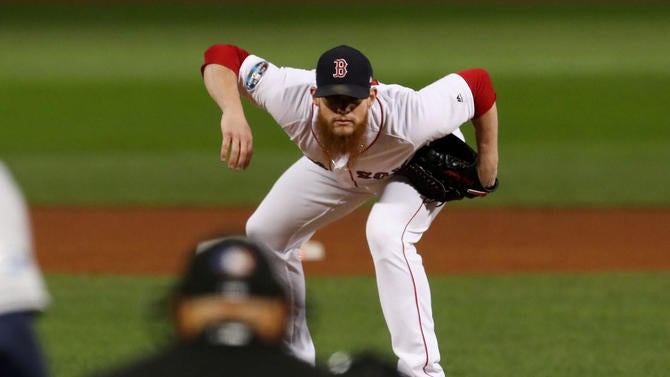
Concern No. 2: Kimbrel is too wild
We've established that Kimbrel is a good reliever -- and a better and more consistent one than either Ottavino or Kelly -- but for some it's a matter of how he goes about his business. To be specific, there's worry that his command results in too many walks and home runs for him to sustain his level of performance as he ages and (ostensibly) loses stuff.
Let's start by establishing an important fact: Kimbrel has already proved he can succeed while walking batters. We aren't working with a theoretical case here; he's shown it can be done. Last season, he yielded a home run and 4.5 walks per nine innings -- and still had a 160 ERA+. How did he do it? By loading up on automatic outs: he fanned 39 percent of the batters he faced and induced a pop-up on 18 percent of the flyballs he allowed. Kimbrel has made a habit of generating high marks in those categories: his career strikeout percentage (42 percent) is nearly twice the big-league average, and he's typically a few percentage points better at getting infield flys, too. Those are fixtures of his game -- ones that seem likely to remain in some capacity.
It's also worth noting, Kimbrel's career suggests he can throw more strikes. His 12.6 percent walk rate last year was the second-highest full-season mark of his career -- following a 2017 in which he walked a career-low 5.5 percent of the batters he faced. The season before that? He walked a career-high 13.6 percent. That he didn't have these kinds of walk rates until arriving in Boston does make one wonder if he'd adjust his approach upon joining a different club. Even if he doesn't, his career strike percentage is one percentage point better than the league average.
Concern No. 3: Kimbrel is too rigid
One stated drawback of signing Kimbrel is needing to hand him the ninth inning. We concede that's a legitimate non-starter for teams with established closers. Of course, we should point out that only a few teams -- maybe four or five -- have relievers who merit that kind of deference. Sorry, everyone else -- you may be good, but you're probably not as good as Kimbrel is.
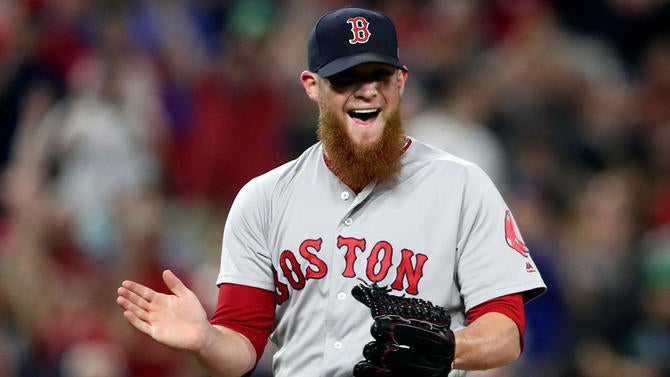
Concern No. 4: Kimbrel is too expensive
That brings us to the final, and likely the biggest, concern teams might have about signing Kimbrel: the cost -- and no, we aren't talking about the draft-pick compensation.
Kimbrel entered the offseason reportedly hoping for six years and $100 million -- or the largest contract ever for a relief pitcher:
I've heard execs from 2 teams say this week that Craig Kimbrel is looking for a deal north of $100 million for 6 years.
— Jayson Stark (@jaysonst) December 13, 2018
He's one of the greatest closers of all time. But is there a record deal out there for him? Hard to say in a bullpen market that has barely moved.
No one should have been surprised by Kimbrel's desire. Chapman (the record holder, at $85 million over five years) and Jansen ($80 million for five) each signed their deals in winter 2017. Inflation alone suggests any and all comparable pitchers should sign for more money. Besides, asking for more money than you expect to receive is how negotiations work. We can promise Chapman and Jansen hoped to sign for more than they ultimately received.
Kimbrel's price has certainly dropped since then, though it's unclear to what threshold. Say he still intends to set the record -- that could entail a six-year deal worth $90 million. Is that an absurd ask? Maybe when you compare it to the deals signed by Ottavino and Kelly -- both worth less than $30 million guaranteed -- but not otherwise.
Consider that a win might valued around $8 million on the open market (that's a conservative estimate). Kimbrel would need to be worth about 11 for a team to feel justified in paying him $90 million over six seasons -- or less than two per pop. Is that a fair projection? It depends on how you evaluate him. Baseball Reference's Wins Above Replacement metric has him worth about seven wins the past three years. Sub in Win Probability Added and he's been worth nine wins in the same span.
Factor in decline and inflation and all that good stuff, and on a pure cost-per-win basis it seems like Kimbrel is probably closer to being worth that ask than not.
Keep in mind too that the $8 million per win figure shouldn't be applied across the board. The Red Sox can afford to spend more per win than the Pittsburgh Pirates -- in part because Kimbrel means more to the Red Sox, a team expected to fight for the division crown, than the Pirates, a team unlikely to remain in postseason contention all year long. Every team, then, should have a unique rate-per-win they're willing to pay.
And most every team has the means to pay that rate for Kimbrel -- and without triggering the competitive balance tax penalty. Per Spotrac, 23 teams have at least $17 million in tax space -- 22 of those have more than $24 million. That means they could sign Kimbrel for $15 million a pop and have significant room to do something at the deadline -- all without incurring penalty.
Teams have, can, and will make excuses for not paying Kimbrel. But let's be clear: the driving factor isn't that Kimbrel isn't worth it or that he's not good -- it's that teams don't want to pay anyone what they're worth if they can avoid it … even if it means fielding worse clubs as a result.



